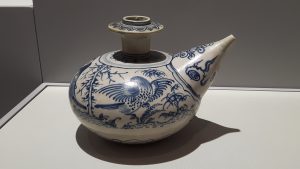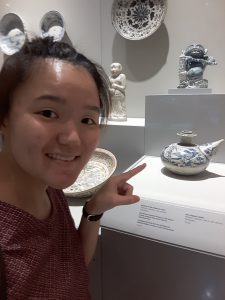Question: you are required to visit the Asian Civilization Museum to fulfill a written assignment of 200-250 words on an artefact of your choice from Southeast Asia
The above figure is a polished looking kendi decorated with birds found in Northern Vietnam in the 15th century that is a type of stoneware.
One of the prominent features of the kendi is its bulbous body as it gives out a sense of wholeness. Its graceful yet subtle curves are seen as warm, comforting and together with the motifs of nature and birds, it gives out a sense of tranquillity and harmony. Its globular body also shows off its elegance yet conservativeness, trying to confine what’s within, avoiding too much showiness yet remaining its traditional style.
A flawless transition is seen from its circular body to its sprout that tapers to a narrow opening. The sprout is perfectly rested on the body of the kendi as if it was a mammary of a female decorated with organic but otherwise indistinguishable motifs.
A short neck with a flange around the mouth is observed. The geometric patterns at the flange, the base of the neck and at the lower body echo and help further accentuate the form of the kendi. However, while the repetition of the geometric shapes at the top and bottom of the kendi give the work a sense of unity, the organic patterns at the body offer variety.
As the painting at the body occupies most space, it acts as the centre of attraction. It also appears as it is carrying more weight as compared to other parts which makes the kendi look more stable and secure. (250 words)


Recent Comments